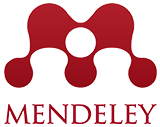SAMPLE EQUALITY TEST IN BLENDED LEARNING USING GOOGLE CLASSROOM
Abstract
Along with the recovery from the COVID-19 pandemic, the government expects the use of technology, information and communication (ICT) in innovative learning activities in schools. One of them is in the process of Limited Face to Face Learning (PTMT) mathematics in Vocational High Schools (SMK) to provide more opportunities for students to actively participate in each stage of learning. The quality of education is very dependent on the quality of learning carried out by teachers in the classroom. Optimization of the learning process can be done by integrating the use of technology as a learning medium, one of which is by using Google Classroom in blended learning at school. o find out the equality between classes in the population, a t-test was conducted. The results of the population equivalence test obtained that all students of Class XI SMK Wira Harapan for the academic year 2022/2023 were equal and the experimental group selected was X JB1 and the control group obtained X AP.
Keywords
Full Text:
PDFReferences
Arikunto, S. 2009. Basics of Educational Evaluation. Jakarta: Earth Literacy
Bire,J. et al. The Influence of Visual, Auditorial, and Kinesthetic Learning Styles on Student Achievement. Journal of Educational Research on Learning Innovation. 44 (2), pp. 168-174.
Kurniawati, M. et al. Application of Blended Learning Using the Flipped Classroom Model Assisted by Google Classroom in Junior High School Mathematics Learning. Journal of Mathematics Education. 7 (1), pp. 8 – 19.
Parnabhakti, L., et al. The Effect of Power Point Media in Google Classroom to Improve Student Learning Outcomes in Mathematics. Scientific Journal of Realistic Mathematics (JI-MR). 1(2), pp. 8-12.
Rizkiyah, A. Application of Blended Learning to Improve Student Learning Outcomes in Building Science Subjects in Class X Tgb SMK Negeri 7 Surabaya. Journal of Building Engineering Education Studies. 1 (1), pp 40 – 49.
Sari, I.K. 2021. Blended Learning as an Alternative Innovative Learning Model in the Post-Pandemic Period in Elementary Schools. JOURNAL OF BASICEDU. 5 (4) , pp 2156 – 2163.
Syarif, I. The Effect of Blended Learning Model on Motivation and Learning Achievement of Vocational High School Students. Journal of Vocational Education, 2 (2)
Santosa, F.H., et al. The Effectiveness of Google Classroom Learning on Students' Mathematical Reasoning Ability. Journal of Mathematics Education Thought and Research (JP3M). 3 (1), pp. 62-70.
Wasis. 2011. Blended Learning-Based Learning. Training Materials and Workshops for the Principal and Teachers of the Harapan Christian College Foundation
DOI: https://doi.org/10.21107/widyagogik.v10i1.15717
Refbacks
- There are currently no refbacks.
Copyright (c) 2022 Ni Putu Meina Ayuningsih

This work is licensed under a Creative Commons Attribution-ShareAlike 4.0 International License.












